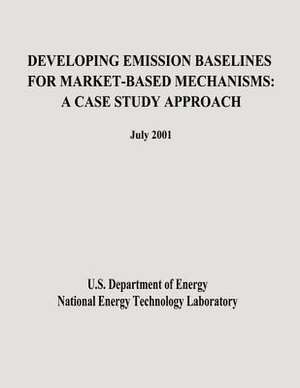Developing Emission Baselines for Market-Based Mechanisms
Autor U. S. Department of Energy, National Energy Technology Laboratoryen Limba Engleză Paperback
Preț: 161.43 lei
Nou
Puncte Express: 242
Preț estimativ în valută:
30.89€ • 33.55$ • 25.95£
30.89€ • 33.55$ • 25.95£
Carte disponibilă
Livrare economică 01-15 aprilie
Preluare comenzi: 021 569.72.76
Specificații
ISBN-13: 9781482613780
ISBN-10: 1482613786
Pagini: 176
Dimensiuni: 216 x 280 x 10 mm
Greutate: 0.42 kg
Editura: CREATESPACE
ISBN-10: 1482613786
Pagini: 176
Dimensiuni: 216 x 280 x 10 mm
Greutate: 0.42 kg
Editura: CREATESPACE
